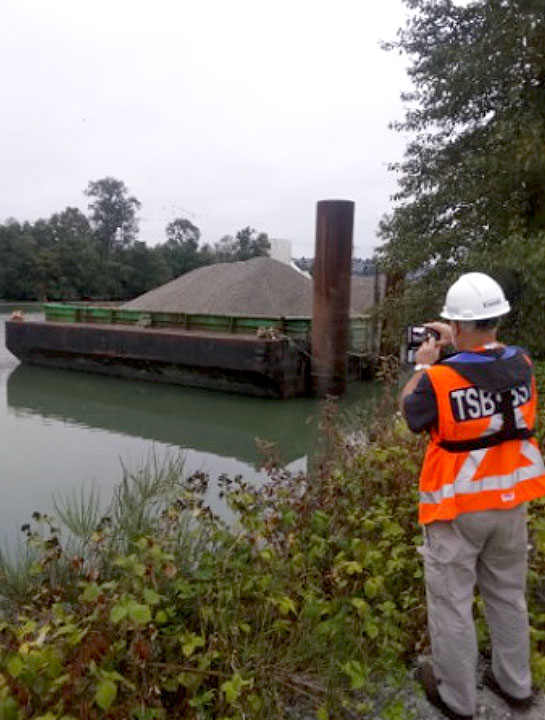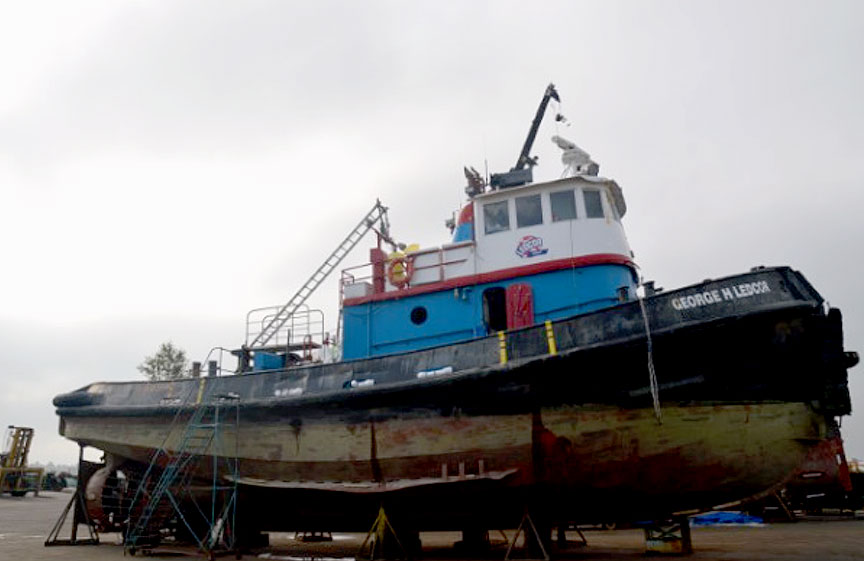Capsizing
Tug George H Ledcor
Fraser River, British Columbia
The occurrence
On , the tug George H Ledcor was towing the loaded gravel barge Evco 55, with the assist tug Westview Chinook pushing to an unloading facility on Mitchell Island in the north arm of the Fraser River, British Columbia (BC). At approximately 2210, the George H Ledcor girded and capsized after being overtaken by the barge. The 4 crew members on board were rescued from the tug's overturned hull by the nearby yarding tug River Rebel and the assist tug Westview Chinook. One crew member sustained a serious injury to his hand. The assist tug then towed the overturned tug and barge to a nearby tie-up, where a pollution boom was deployed around the tug. An unknown quantity of diesel fuel was released as a result of the occurrence.
Media materials
News release
Girding and capsizing of the tug George H Ledcor on Fraser River underscores gaps in towing practices, training and oversight
Read the news release
Animations
Between 2005 and 2018, the TSB received reports of 26 girding situations resulting in 21 capsizings. Girding occurs when a vessel is pulled broadside by a towline force and is unable to manoeuver out of this position. The TSB created this video to illustrate the factors leading to girding and the recovery methods.
Deployment notice
TSB deploys a team of investigators to the site of a marine occurrence in the North Arm of the Fraser River, British Columbia
Richmond, British Columbia, 15 August 2018 — The Transportation Safety Board of Canada (TSB) is deploying a team of investigators to Richmond, British Columbia, where the tug George H Ledcor capsized and sank while towing the loaded gravel barge EVCO 55. The TSB will gather information and assess the occurrence.
Investigation information
Download high-resolution photos from the TSB Flickr page.
Class of investigation
This is a class 3 investigation. These investigations analyze a small number of safety issues, and may result in recommendations. Class 3 investigations are generally completed within 450 days. For more information, see the Policy on Occurrence Classification.
TSB investigation process
There are 3 phases to a TSB investigation
- Field phase: a team of investigators examines the occurrence site and wreckage, interviews witnesses and collects pertinent information.
- Examination and analysis phase: the TSB reviews pertinent records, tests components of the wreckage in the lab, determines the sequence of events and identifies safety deficiencies. When safety deficiencies are suspected or confirmed, the TSB advises the appropriate authority without waiting until publication of the final report.
- Report phase: a confidential draft report is approved by the Board and sent to persons and corporations who are directly concerned by the report. They then have the opportunity to dispute or correct information they believe to be incorrect. The Board considers all representations before approving the final report, which is subsequently released to the public.
For more information, see our Investigation process page.
The TSB is an independent agency that investigates air, marine, pipeline, and rail transportation occurrences. Its sole aim is the advancement of transportation safety. It is not the function of the Board to assign fault or determine civil or criminal liability.

